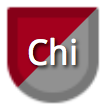Welcome back for the fifth in our series of posts offering analysis of the data we are receiving on MBA DecisionWire. MBA DecisionWire is a resource that allows candidates to share where they’ve decided to attend business school based on the offers they received.
If you have made your final decision in terms of where you will attend, please share on MBA DecisionWire. You can also use the filter options to see how other candidates have made their choices.
In this installment of our ongoing series, we will examine three schools: Harvard Business School (HBS), the University of Chicago Booth School of Business and the Fuqua School of Business at Duke. We’ll look at the other schools to which their admitted students also gained admission. The purpose of this analysis is to illustrate that you cannot really compare one school’s reported yield rate versus another’s without factoring in the other options candidates had when admitted to each school.
The other schools that candidates who were admitted to HBS and Chicago Booth also had to choose from were similar in terms of ranking, which makes sense since both place in the top five in most business school rankings. The top six schools that candidates admitted to HBS or Chicago Booth were also deciding between included Wharton, Kellogg, Tuck and MIT. Where things differ for these two schools is their reported yield rates. HBS’s is significantly higher than Chicago Booth, which is not surprising when considering that HBS has a stronger brand recognition and global reputation.
Fuqua’s yield (around 51 percent) is typically a bit lower than Chicago Booth’s (roughly 59 percent), but the two schools are broadly in the same range, especially when compared to HBS (where yield is 91 percent). What is interesting, however, is to look at the other options available to admits at Fuqua versus Booth.
As noted earlier, Booth’s admits were also admitted to many of the other top schools. But for Fuqua, only Kellogg and Tuck are included in the list of top six schools where candidates also reported admission. The remaining four schools—Michigan’s Ross School of Business, Cornell’s Johnson Graduate School of Management, UNC’s Kenan-Flagler School of Business and UC Berkeley’s Haas School—do not appear in the top six for Booth and Harvard cross-admit data. So while at first glance the yield rates might suggest Fuqua and Chicago Booth are equally successful in terms of competing with other schools for admitted students—they both win at a similar rate—it is clear that Chicago Booth’s admits typically have higher-ranking options from which to choose.
MBA DecisionWire Data Analysis:
Harvard Business School: 60 admits
Where HBS’s 60 admits also gained admission:
Wharton: 20 (33 percent)
Stanford: 13 (22 percent)
Kellogg: 10 (17 percent)
Chicago: 9 (15 percent)
MIT: 8 (13 percent)
Tuck: 8 (13 percent)
 University of Chicago Booth School of Business
University of Chicago Booth School of Business
82 admits
Where Chicago Booth’s 82 admits also gained admission:
Wharton: 31 (38 percent)
Kellogg: 16 (20 percent)
Columbia: 14 (17 percent)
Tuck: 12 (15 percent)
Harvard: 11 (13 percent)
MIT: 9 (11 percent)
 Duke’s Fuqua School of Business
Duke’s Fuqua School of Business
68 admits
Where Fuqua’s 68 admits also gained admission:
Ross: 19 (28 percent)
Cornell: 13 (19 percent)
Kellogg: 12 (18 percent)
Kenan-Flagler: 11 (16 percent)
Tuck: 8 (12 percent)
Haas: 7 (10 percent)
While it would be premature to draw too much from this analysis due to our relatively small sample size, it does provide a better understanding of how the choices admitted students face vary from school to school, which, in turn, should be considered when comparing the schools’ yield rates.
If you have made your final decision about where to attend business school, please add your submission to MBA DecisionWire.












